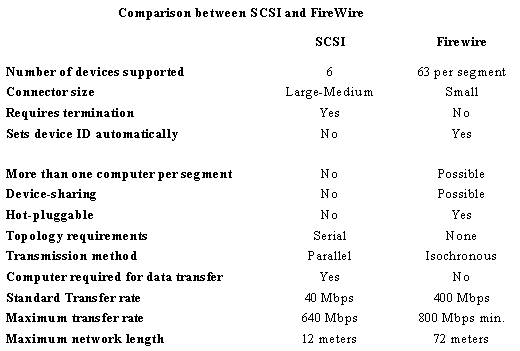A digital audio transmission medium developed by Apple computer, designed to support dozens, possibly hundreds, of high-bandwidth audio streams. IEEE 1394 is designed to replace point-to-point AES/EBU connections, will support multiple data formats so that audio, video, MIDI, and control signals may all be sent over a single cable. FireWire also distributes power as well as data, permitting hot-plugging of devices. IEEE 1394 is designed to be a fully specified bus, bi-directional and with the ability to broadcast from a single source to multiple receivers. Currently (late 1998) there is a 4.5-limit between any two adjacent nodes, designed to support a simple, low-cost clocking mechanism to be built into the standard to support isochronous data transfers for audio and video. The isochronous clock embedded within the IEEE 1394 standard runs at 8MHz, or one “tick” every 125µs. This is problematic for audio signals which require upwards of 44MHz clock rates, so the FireWire standard is being modified to address the problem of high-resolution synchronization. The signal can traverse up to a maximum of 16 hops, effectively extending the distance to about 70 meters. This was originally developed to support the transfer of high-bandwidth signals between computer peripherals; the multi-layer IEEE 1394 standard also allows the use of many other cabling technologies, including Category 5 twisted pair copper wire and 50mm multi-mode optical fibre, the later permitting distances between devices of hundreds of meters. See also mLan.
